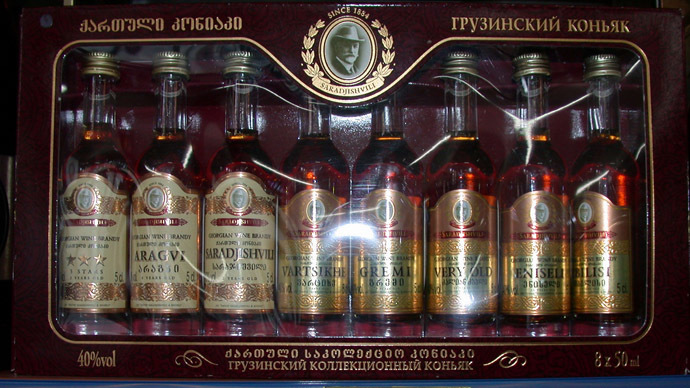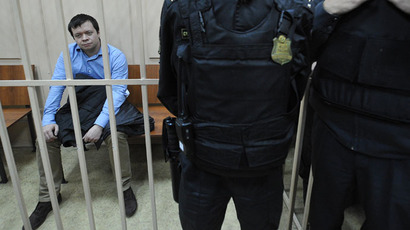The cognac is here! Russia receives first delivery of Georgian brandy

After a 7-year ban on Georgian imports, trade between the two politically strained neighbors has resumed with an inaugural delivery of 21,600 thousand bottles of brandy to Russia.
The cases passed through Kazbegi Verkhny Lars, the only official land checkpoint bridging Russia and Georgia, that has remained closed since 2006.
Tibisi-based Kakheti Traditional Winemaking sent the first batch of goods, with wine and other agricultural products to follow.
Georgia’s largest wine exporter, JSC Tbilvino, and Borjomi, a mineral water distributor, are expected to re-launch their products in Russia by the end of the summer.
The Russian Sanitation Service has issued more than 100 licenses to Georgian wine and beverage suppliers, but the products must still face scrupulous inspection before being granted entrance into the Russian market.
Russia's Sanitary Service refused to register three wine labels and five brandy labels because they failed to meet inspection requirements. Interfax reported 245 applications were submitted for import licenses.
The import of Georgian wine, mineral water, and agricultural products to Russia has been banned since the spring of 2006, after a spy scandal prompted Russia to impose an embargo on imports from the South Caucasian nation, citing consumer safety concerns over low quality.
Russia had previously been the main consumer of Georgian wine, and its sudden break nearly crippled the Georgian wine industry. As a result of the ban wine, production fell from 60 million bottles a year to 16 million.
In the absence of its largest export partner, Georgia looked to Belarus, Ukraine, and Kazakhstan to sell wine.
According to customs statistics, in 2012 Russia’s foreign net trade was $837.2 billion worldwide, and $117.7 billion in CIS countries.
Georgian wine exports increased to $54.1 million in 2011, according to the most recent data on Georgia’s National Statistics Office website. Exports rose 37.7 percent to reach 16.9 million liters.
In 2012, Georgia produced 150,000 to 200,000 tons of grapes, 30,000 to 40,000 of which are used to produce wine for both local and foreign markets, according to Georgia’s Export Market Development Action Plan.
Because of Georgia’s geographical location in the south caucuses, the fruit harvest occurs 2 to 4 weeks earlier than much of Eastern Europe, offering the industry a unique competitive advantage.
In 2012, Russia imported $3.1 billion dollars of alcoholic and non-alcoholic beverages.
The two countries re-engaged in trade talks after Bidzina Ivanishvili upset incumbent Mikhail Saaksahvili in the October prime minister election.














